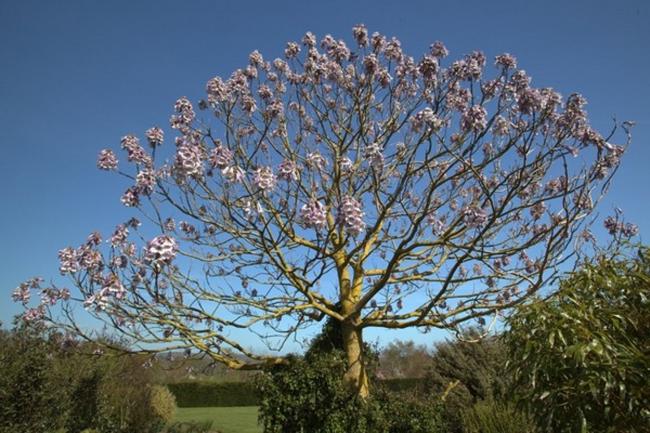Paulownia: environmental and economic sustainability for a new forest system

The operative groupe general objective is to give a concrete response toward the problem of the climate change and the profitability decrease of the agricultural-forestry system. Paulownia is a developing and innovative forestry supply chain, which can promote carbon seizure and conservation and offer a good alternative to current forestry systems, which can’t give an appropriate economic sustainability any more.
1. CO-OPERATION OPERATING ACTIVITY
2. ACTIVITY NECESSARY STUDIES TO FULFIL THE PLAN (OF THE MARKET, OF
FEASIBILITY, BUSINESS PLANS, ETC.)
3. SPECIFIC ACTIVITIES LINKED TO THE PLAN REALISATION:
Activity 3.1: Efficient and sustainable cultivation techniques
Activity 3.2: Study of timber production by using carbon high storage time: analysis of physicalmechanical properties
Activity 3.3: Make the most of new products and production scraps
Avtivity 3.4: Carbon footprint, LCA and traceability
4. DIVULGATION ACTIVITY
5. EDUCATION/CONSULTATION ACTIVITY
This activity provides for a check of the adaptability of the species to the regional environment (Emilia Romagna), identification of the pedological factors which restricts the cultivation, monitoring of the state of nutrition of the plants by means of soil and plant analysis techniques. Simultaneously with the removal of the soil, the main variables of the Paulownia vegetation; rather, diameter, height and volume of the topsoil, will be measured. Moreover, the presence of possible diseases will be visually considered and the failures accounted for: that is the percentage of dead plants among those planted.
Lastly, we will take note of the interventions carried out on the plants from the plant and on the ground to evaluate and define good practices.
Expected results:
• Identification of the correlations among pedological parameters, soil fertility with the growth rates and biomass accumulation of the plant as well as the development of potential benchmarks for assessing the nutritional status of the tree (leaf indices);
• Development of new cultivation techniques for production maximization and environmental sustainability;
• Definition of Paulownia guidelines able to guide producers on the basis of the best agronomic techniques aimed at simultaneously reducing both the environmental impact and maximizing plant production yields.
This activity provides for the analysis of the physical-mechanical characteristics and of the natural durability. It will also consider the possible industrial transformations that will be followed by the other project partners.
The characterization tests include the determination of:
• Volume mass
• Linear shrinkage, volumetric and dimensional stability
• Flexural elastic module
• Flexural strength
• Shear strength
• Compressive strength
•Superficial hardness
• Attitude to bonding
• Natural durability
The values relating to the quantity of carbon stored in the timber (and in the derived products if available) will also be calculated, allowing the project to make an important contribution to the carbon storage and the competitiveness of forest systems.
Expected results:
• Identification of possible industrial applications for Paulownia timber based on the results of timber characterization in terms of physical-mechanical properties and durability;
To facilitate the introduction of a new material that is potentially very interesting, such as Paulownia wood, it is necessary to demonstrate its use at an industrial level. The action aims to define industrial products in solid wood or derivatives in which this material can find absorbing developments. The material for the manufacture of products or semi-finished products will then be tested and the industrial yields will be verified and finally the realization and characterization of a certain number of
prototypes.
There will also be the possibility to address production scraps to industrial processes that can enhance them. During the realization of the industrial tests the basic information on the industrial processes functional to the calculation of the carbon footprint of the products will also be collected.
Expected results:
• Creation of prototypes of new products with high added value and high carbon storage capacity;
This activity includes the development of a model to account for the carbon capture during the product life cycle and the identification of existing traceability methods that can be adapted to the timber supply chain.
The LCA (Life Cycle Assessment) analysis of the Pauwlonia timber supply chain has the purpose of carrying out a balance of CO2eq emissions from the planting of the plant and its cultivation and growth, up to the transformation of the harvested timber. What is expected of the LCA study is that the Pauwlonia supply chain is virtuous from the point of view of capturing climate-changing emissions, generating a CO2 offsetting balance with respect to the emissions produced.
The action also provides for the formalization of the supply chain process and the identification of the exchange points to be formalized and the data to be managed for traceability purposes, which must trace the entire supply chain from the origin (geographical location and cultivator) to the final product of value obtained from wood but also sub-products conferred in secondary processes or as a raw material for other products with a view to circular economy.
Expected results:
• Creation of a model to calculate the LCA for the measurement of seizured carbon throughout the production cycle, starting from the planting of the plant to the end of the product life cycle;
• Identification of exchange points to be formalized and data to be managed for traceability purposes;
| Titolo/Descrizione | Url | Tipologia |
|---|---|---|
|
Sito web del progetto
|
Sito web
|